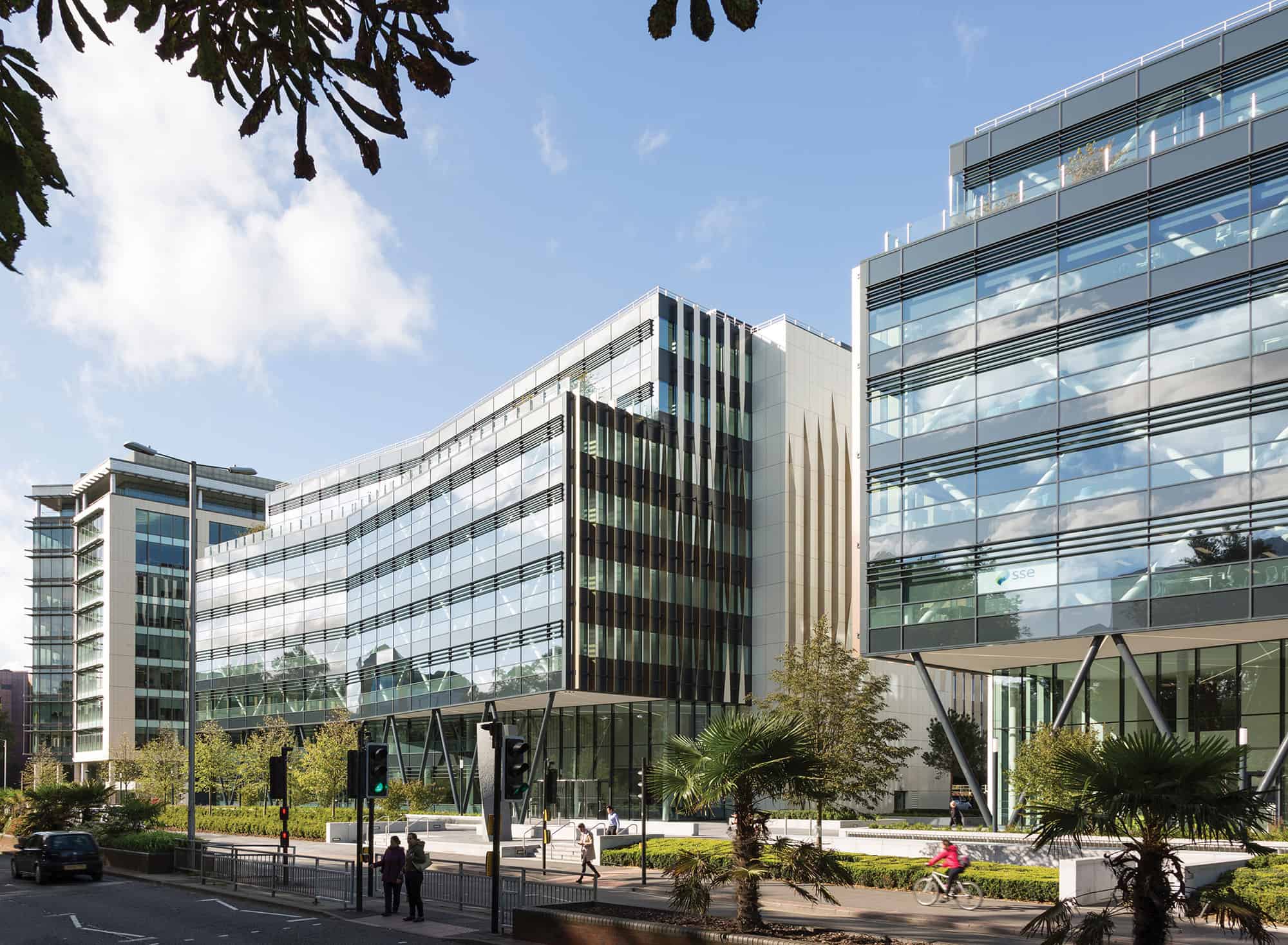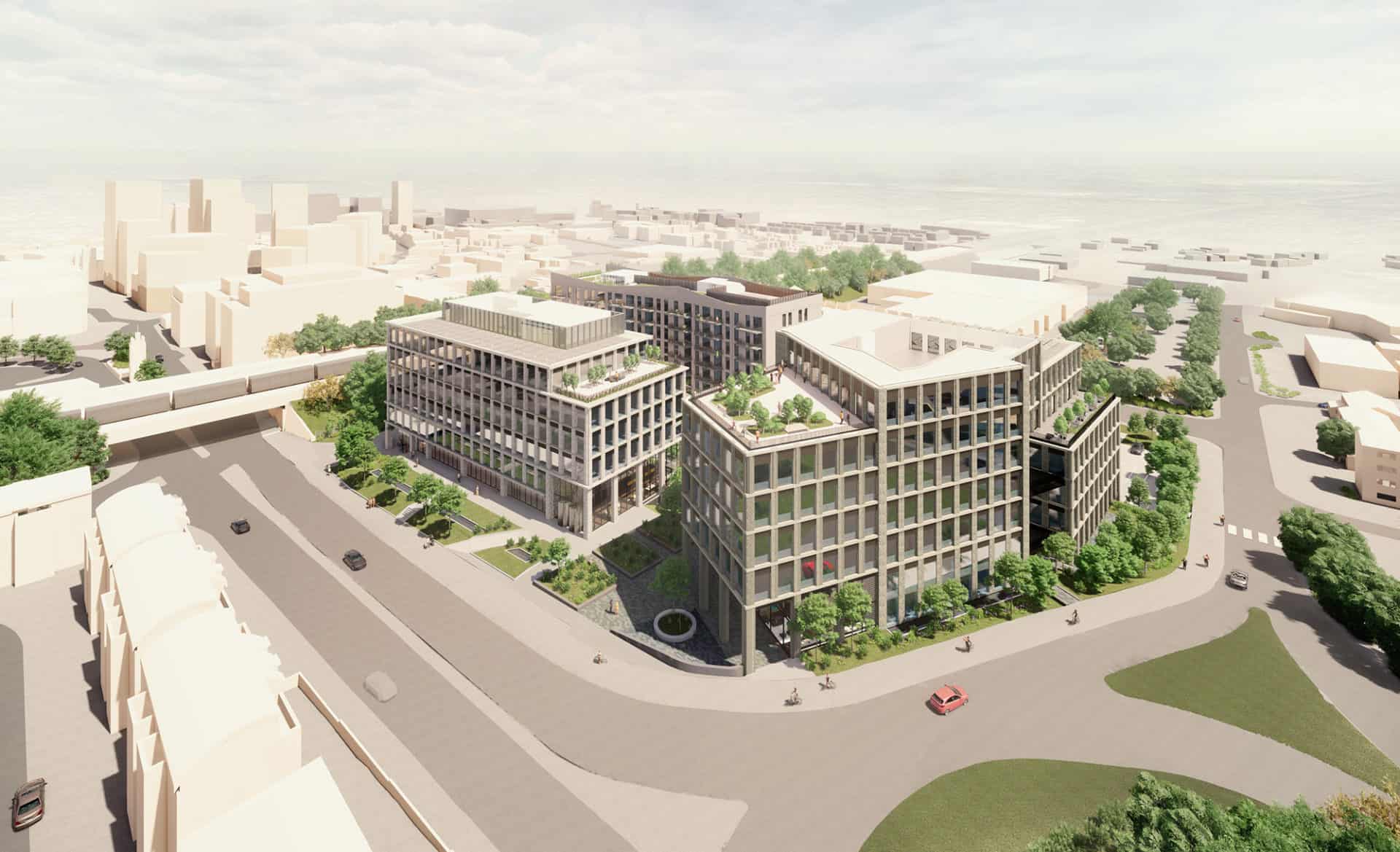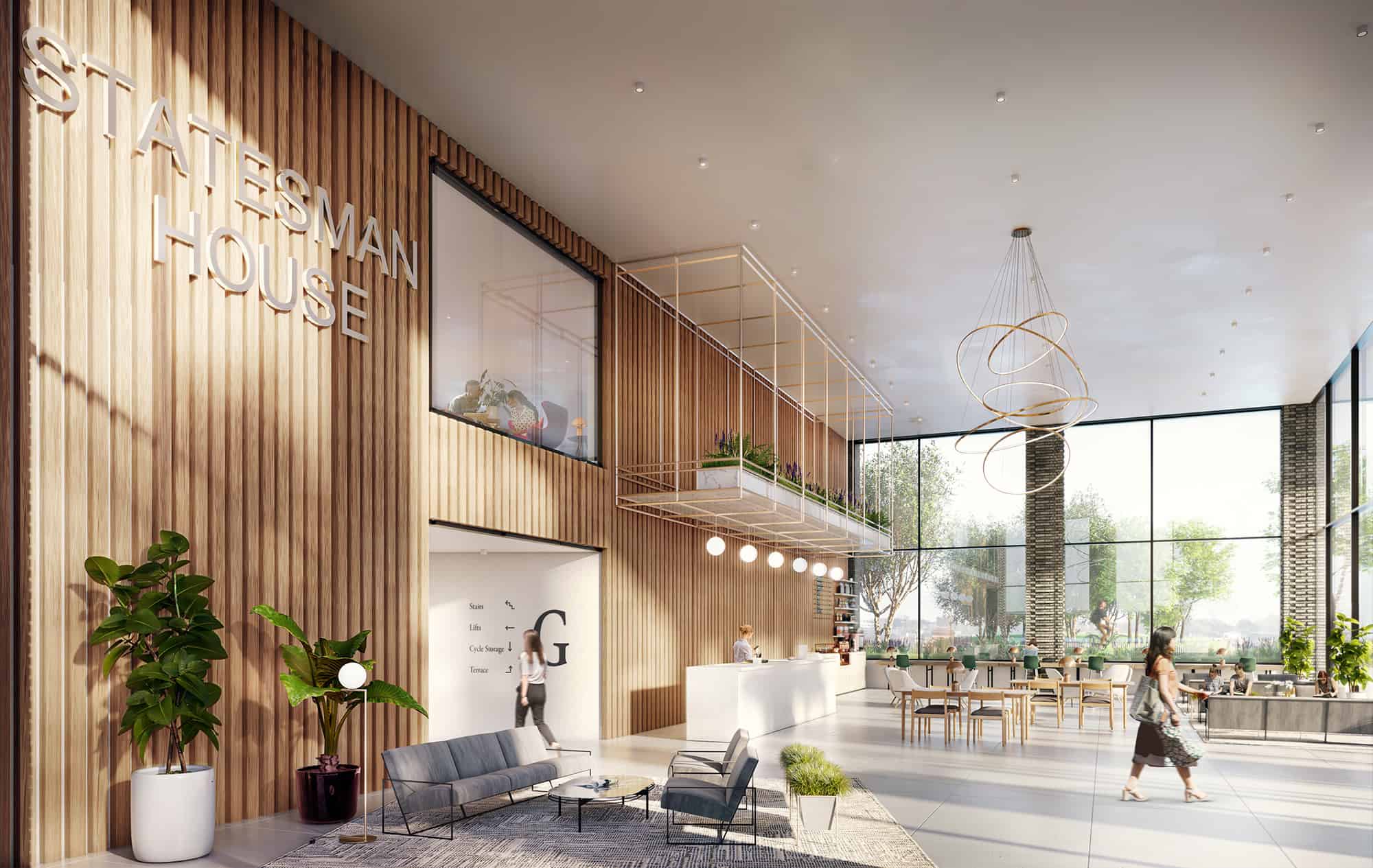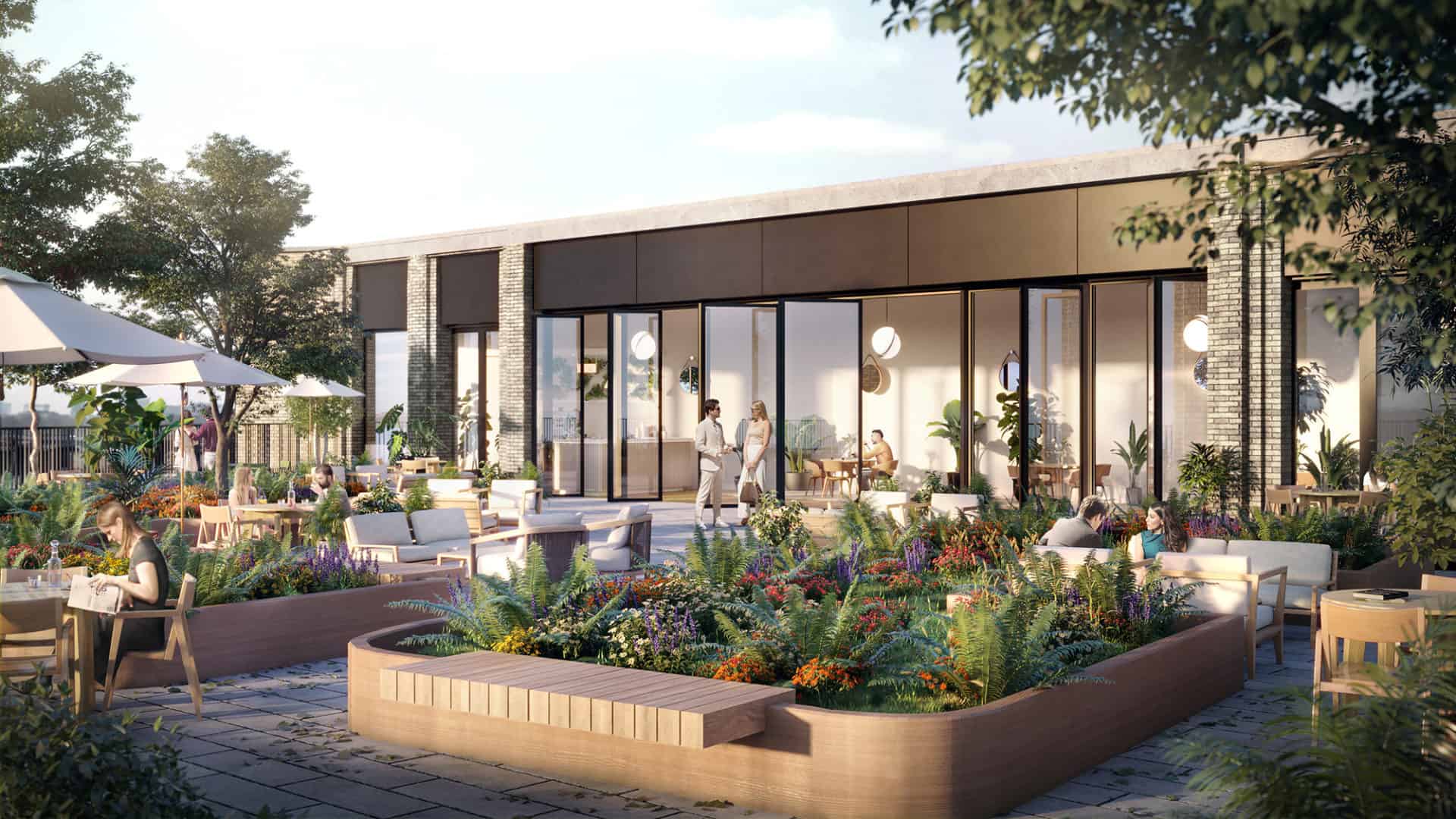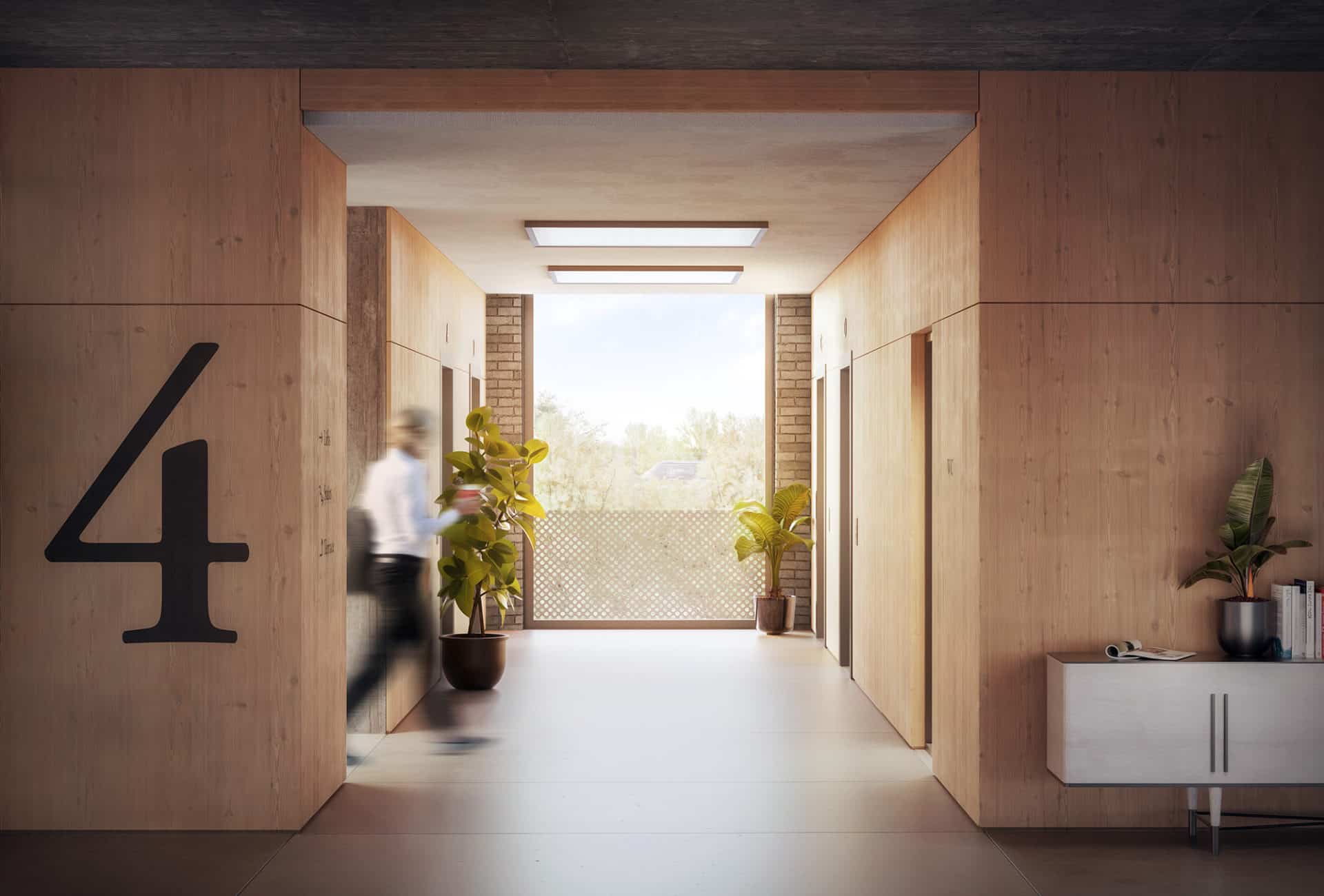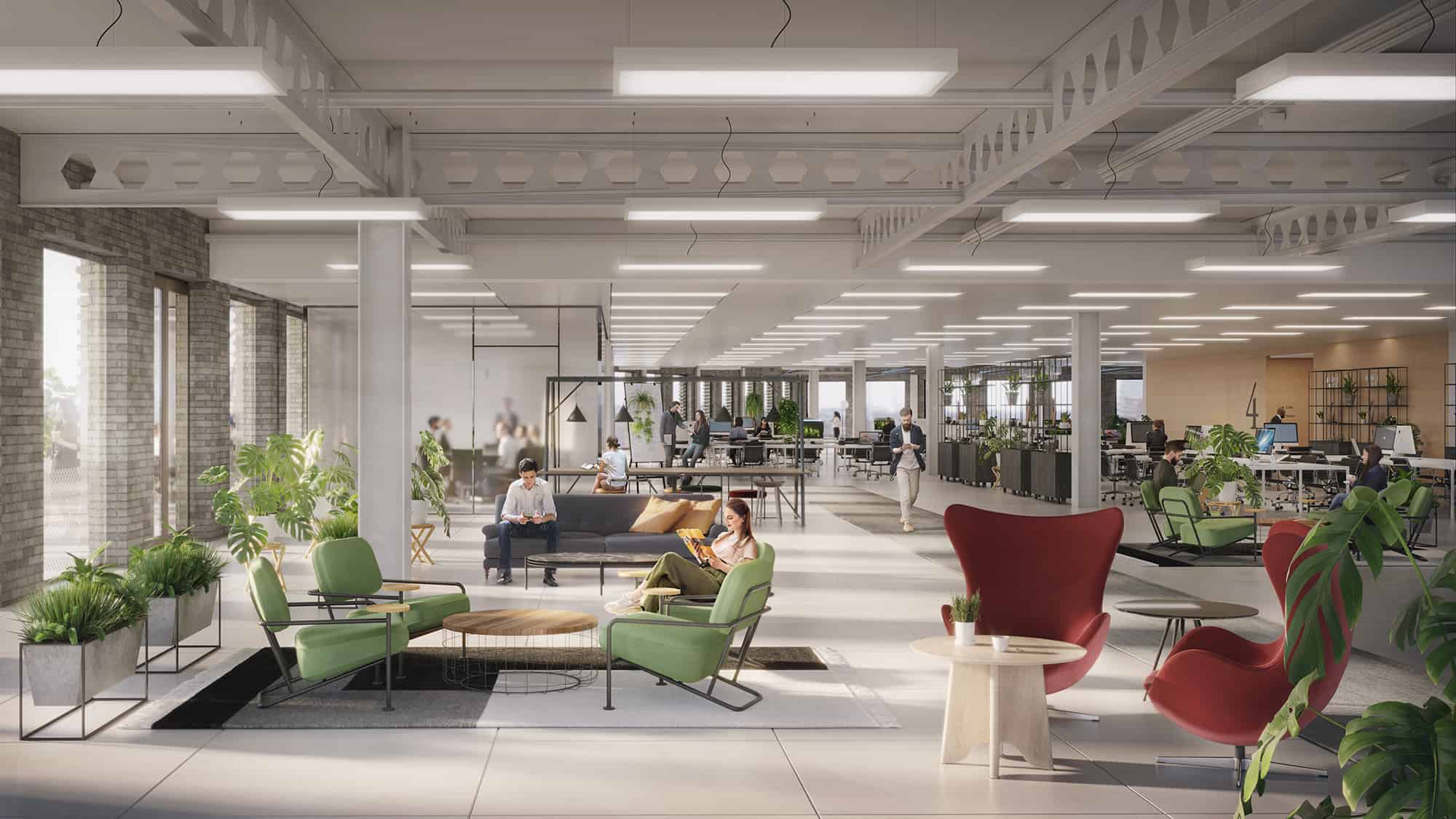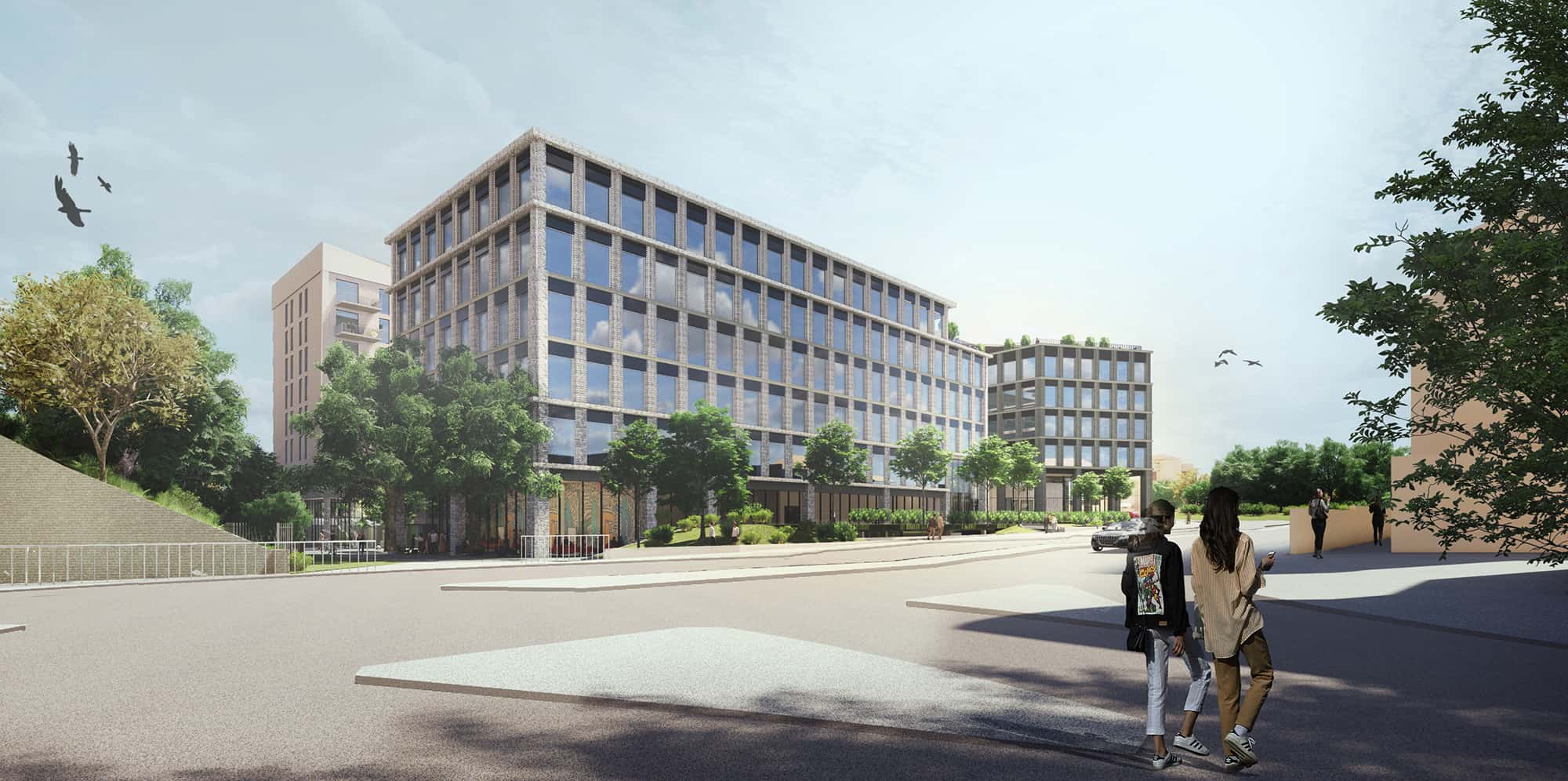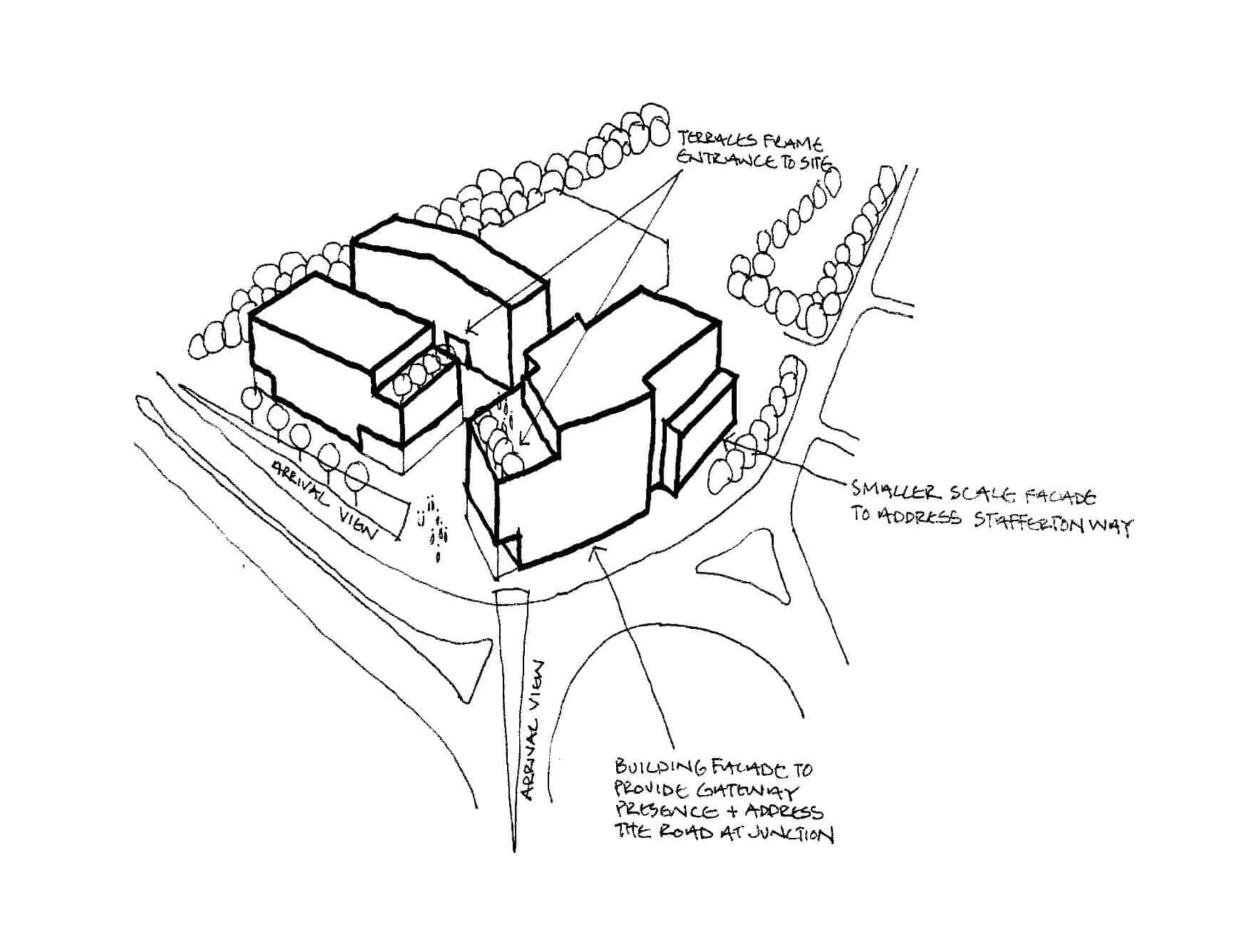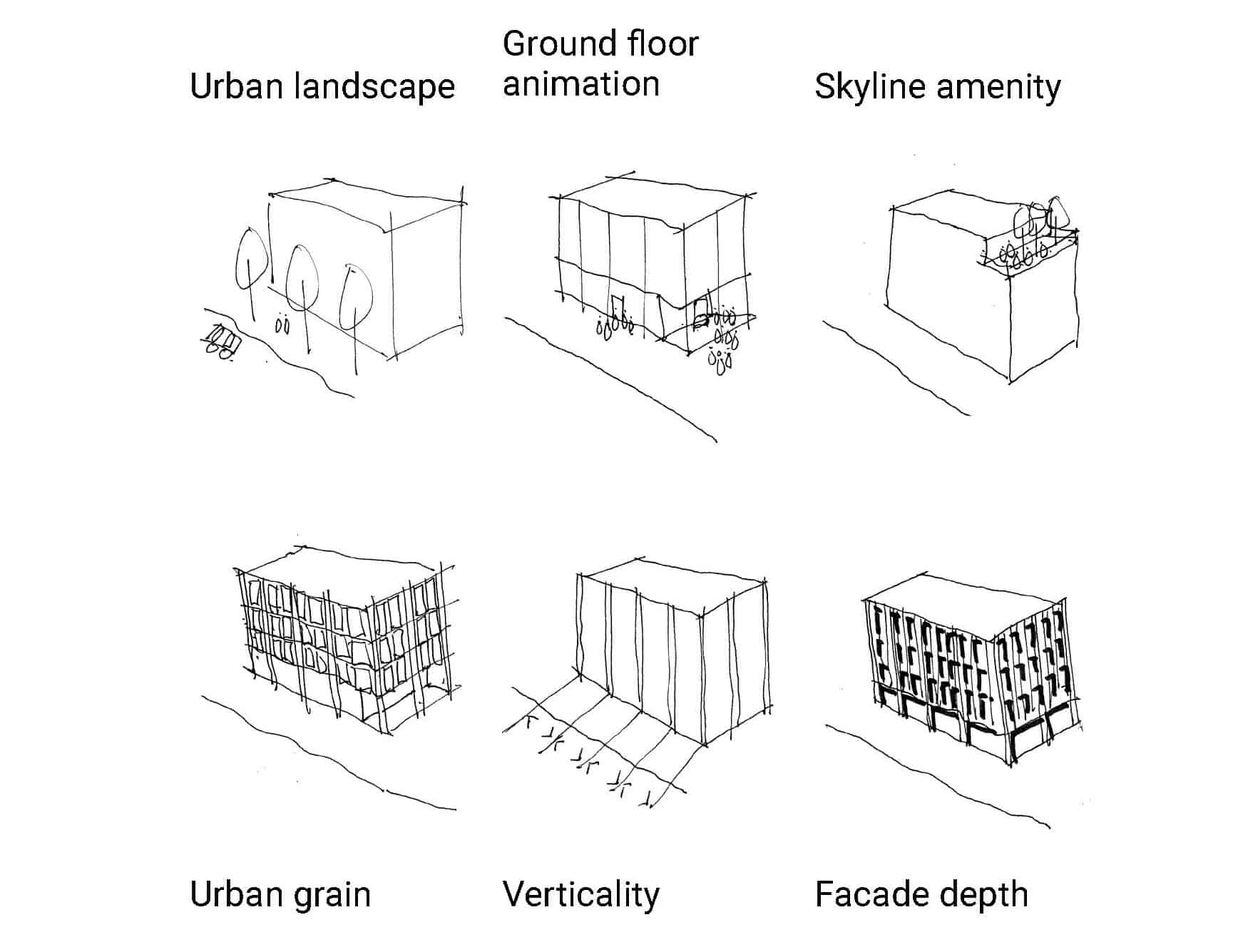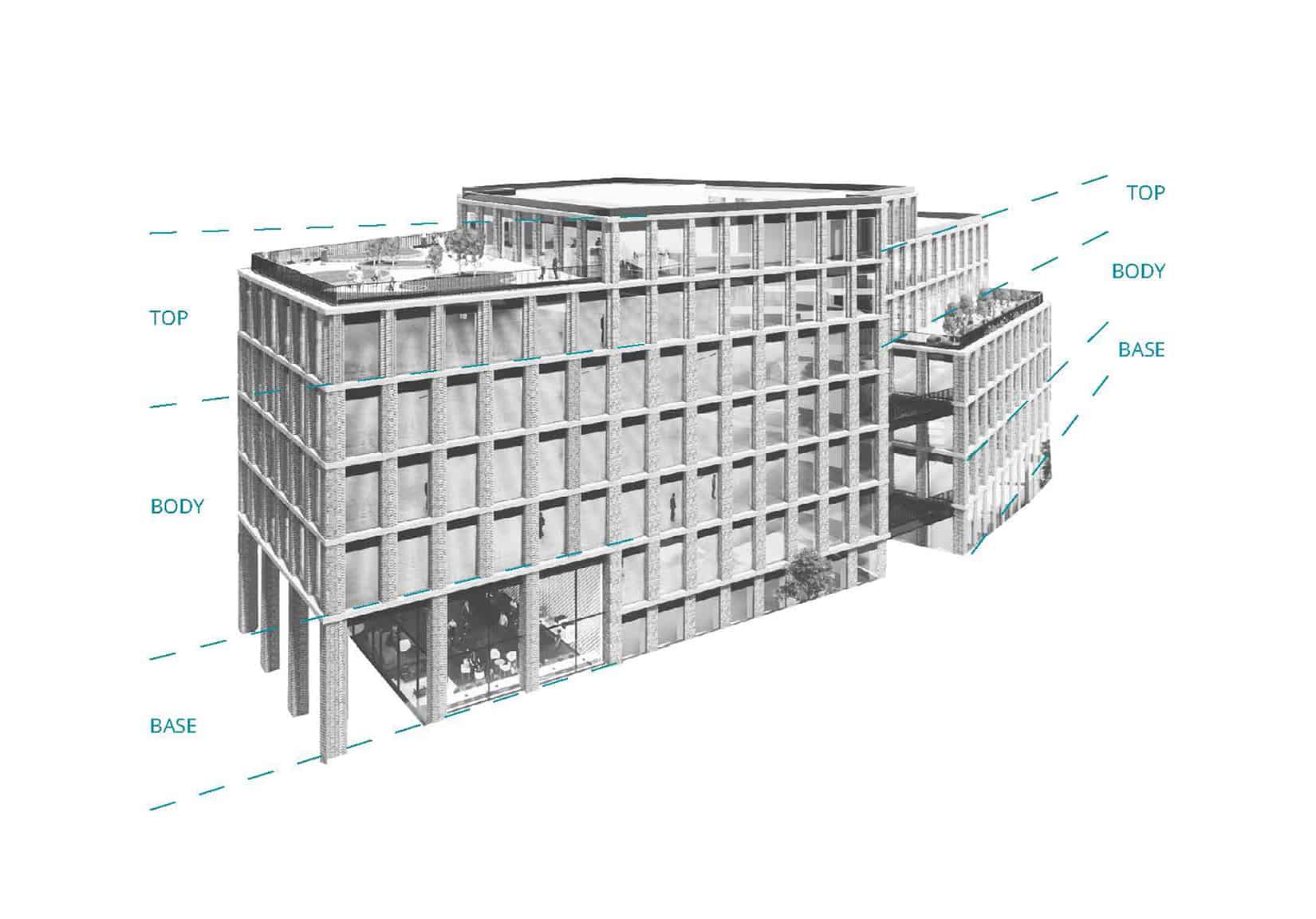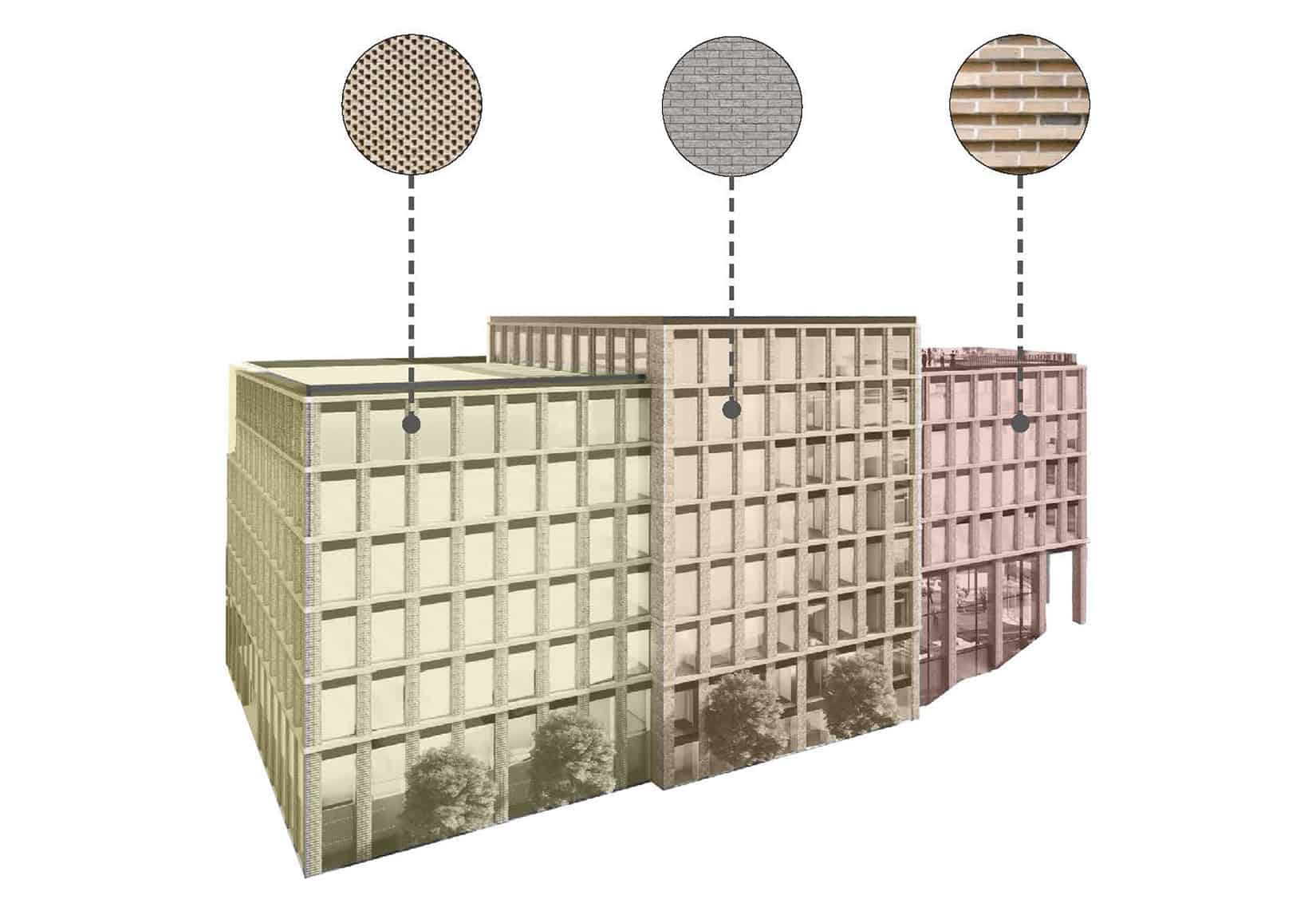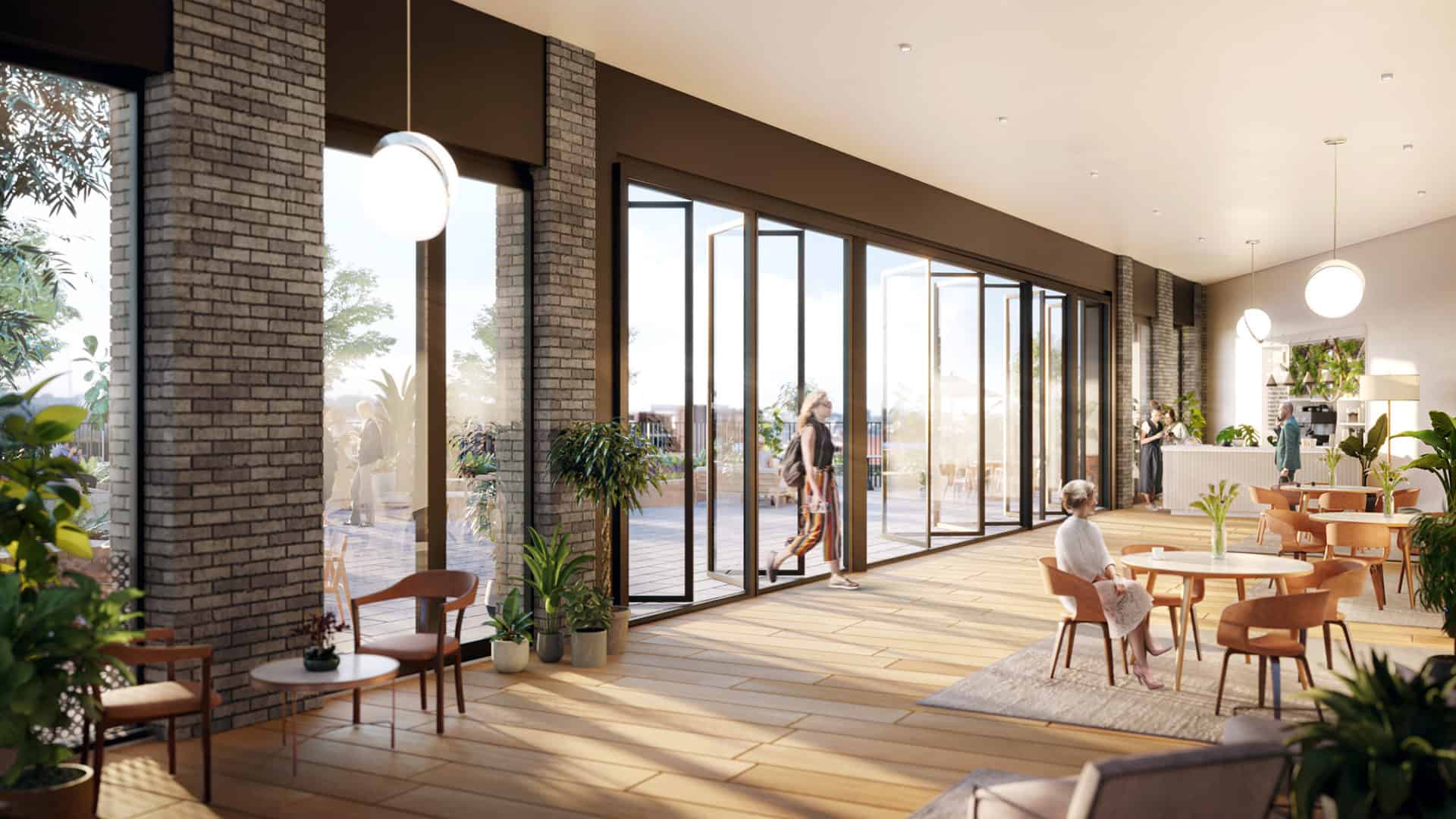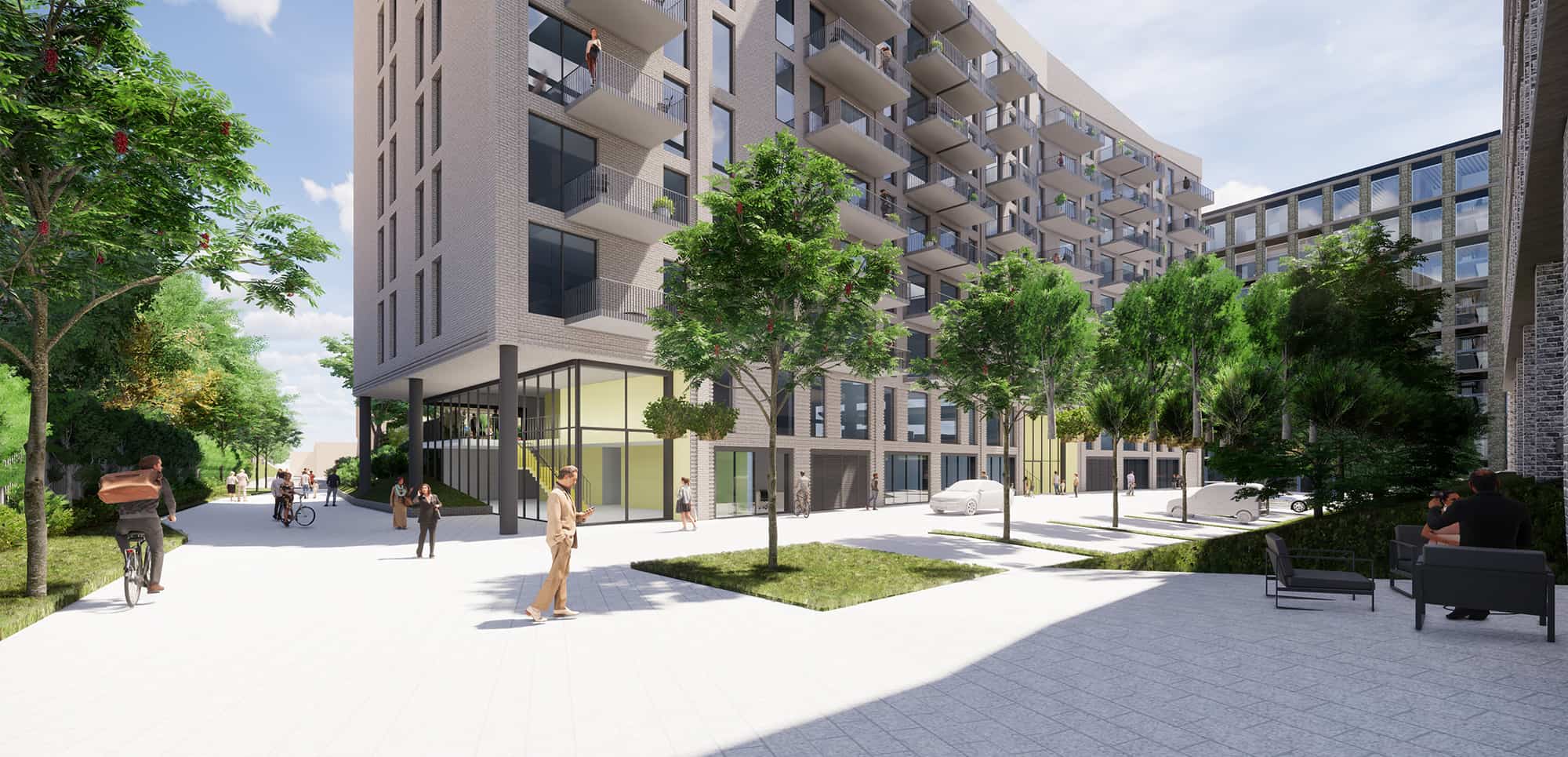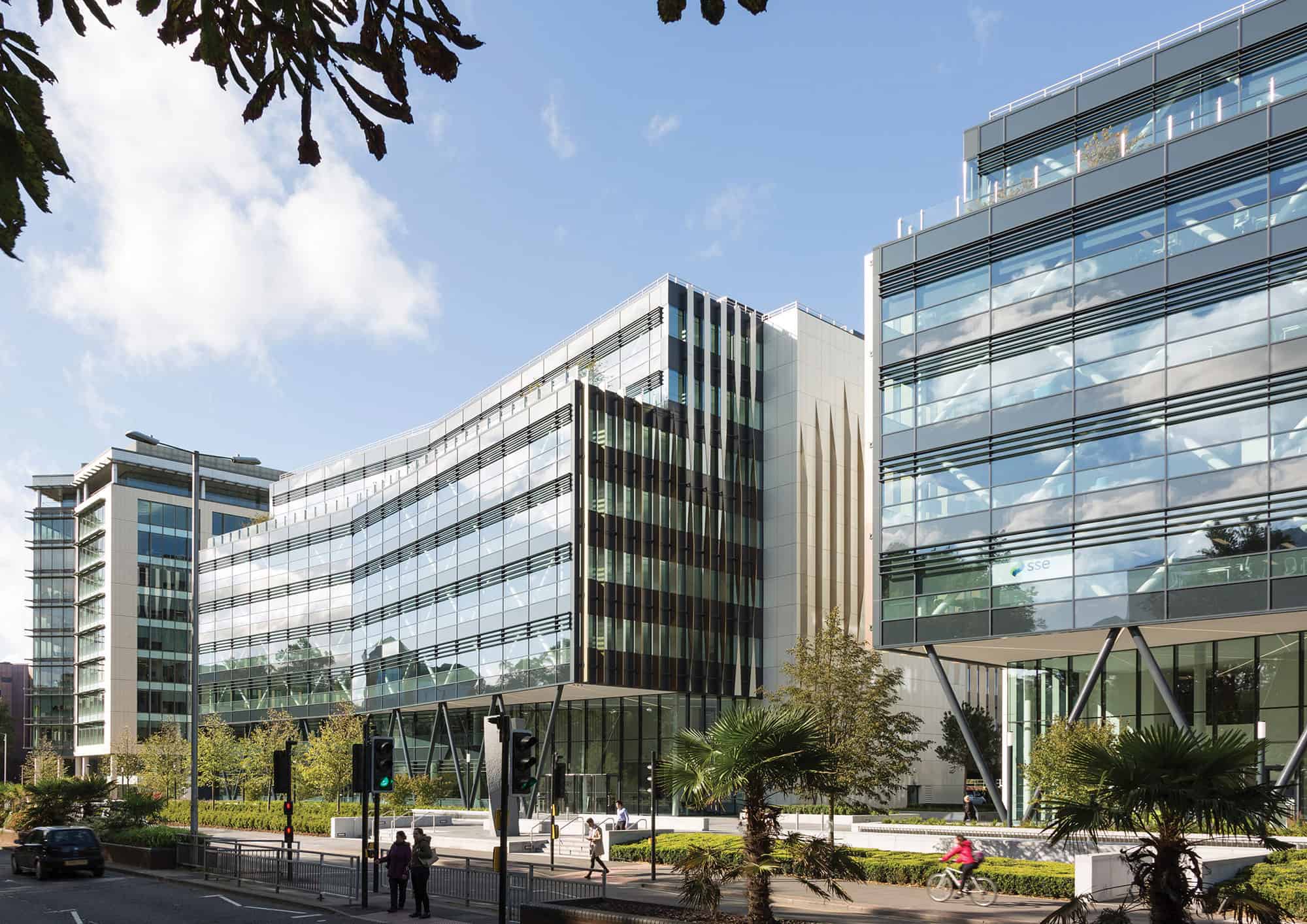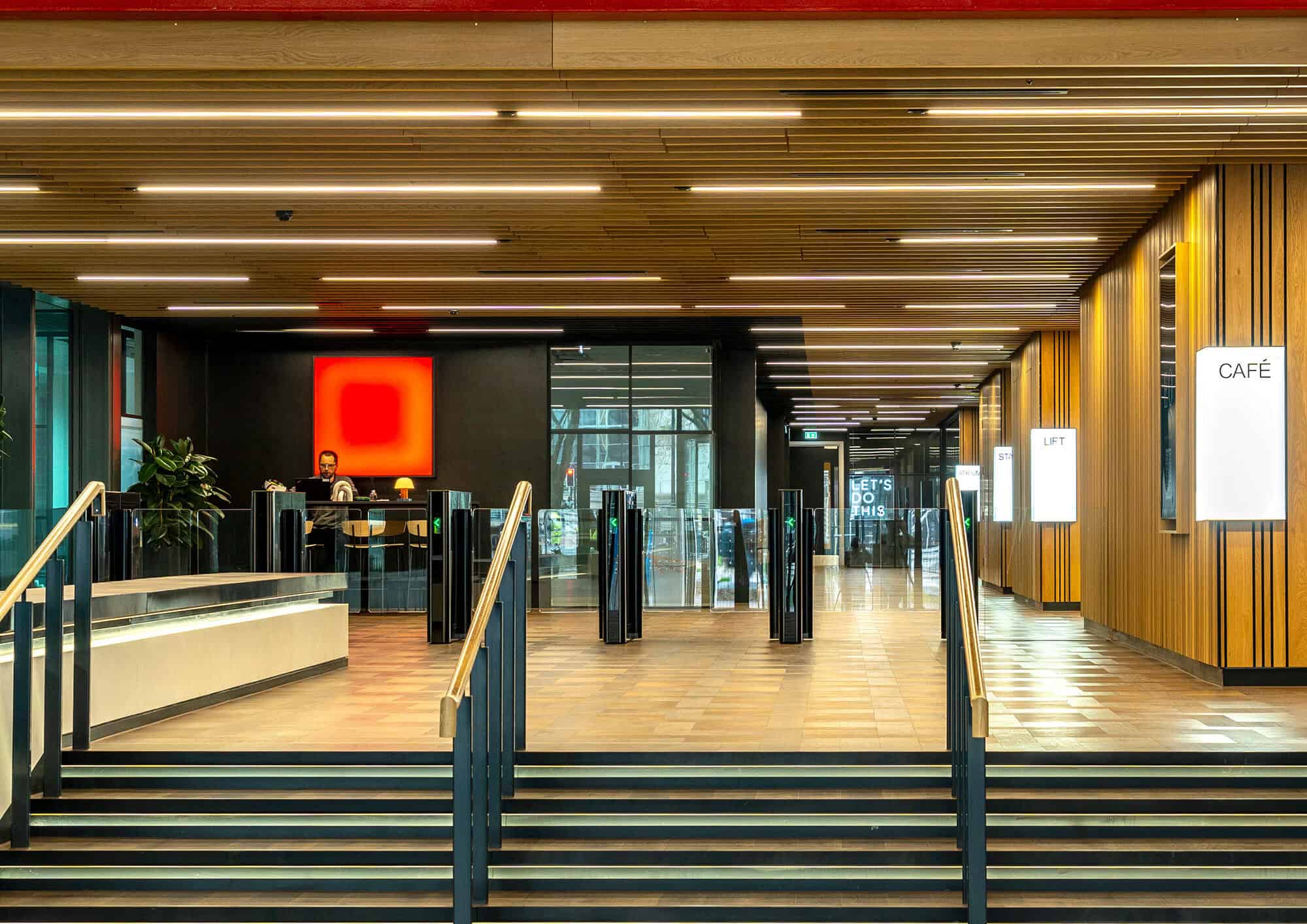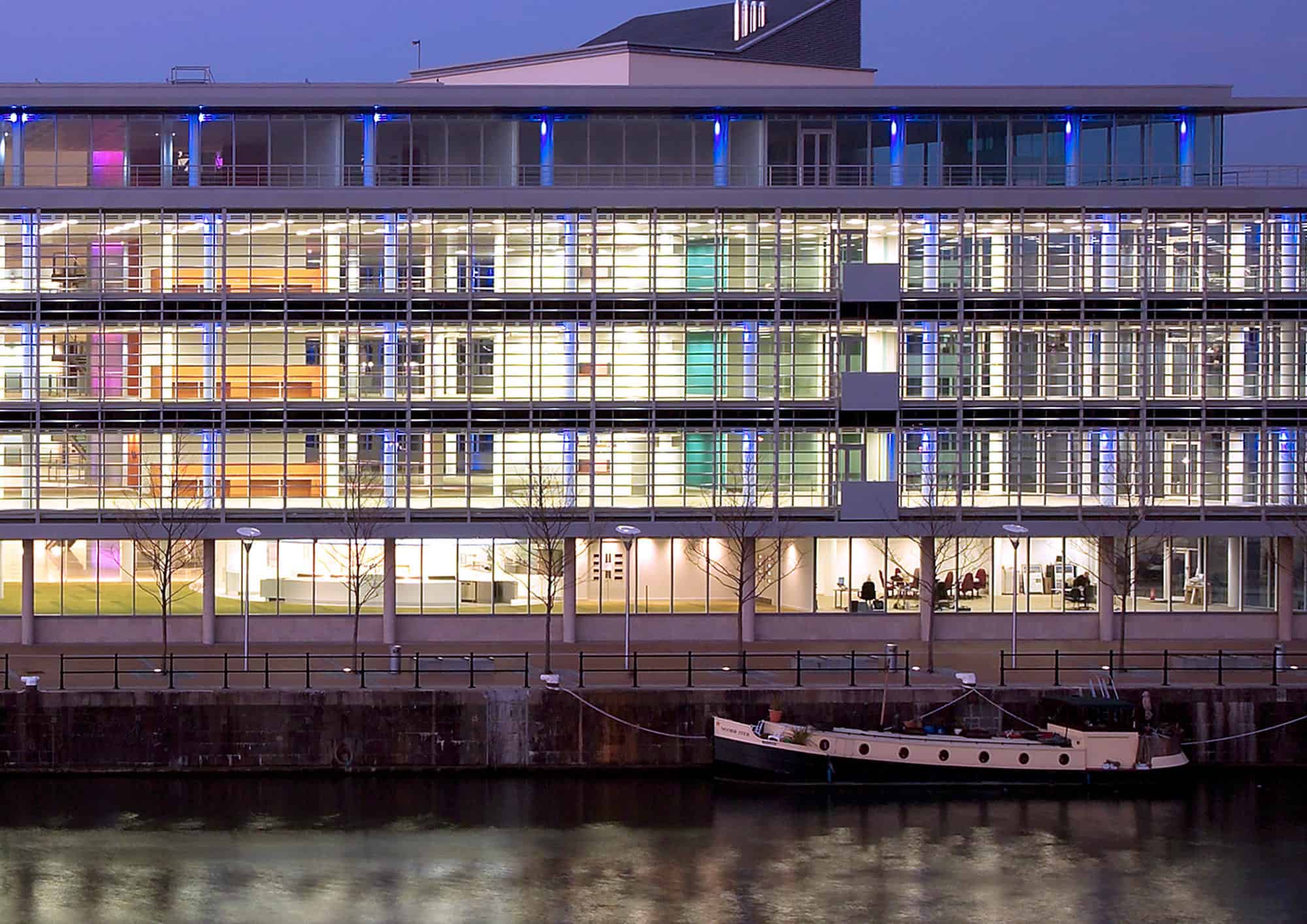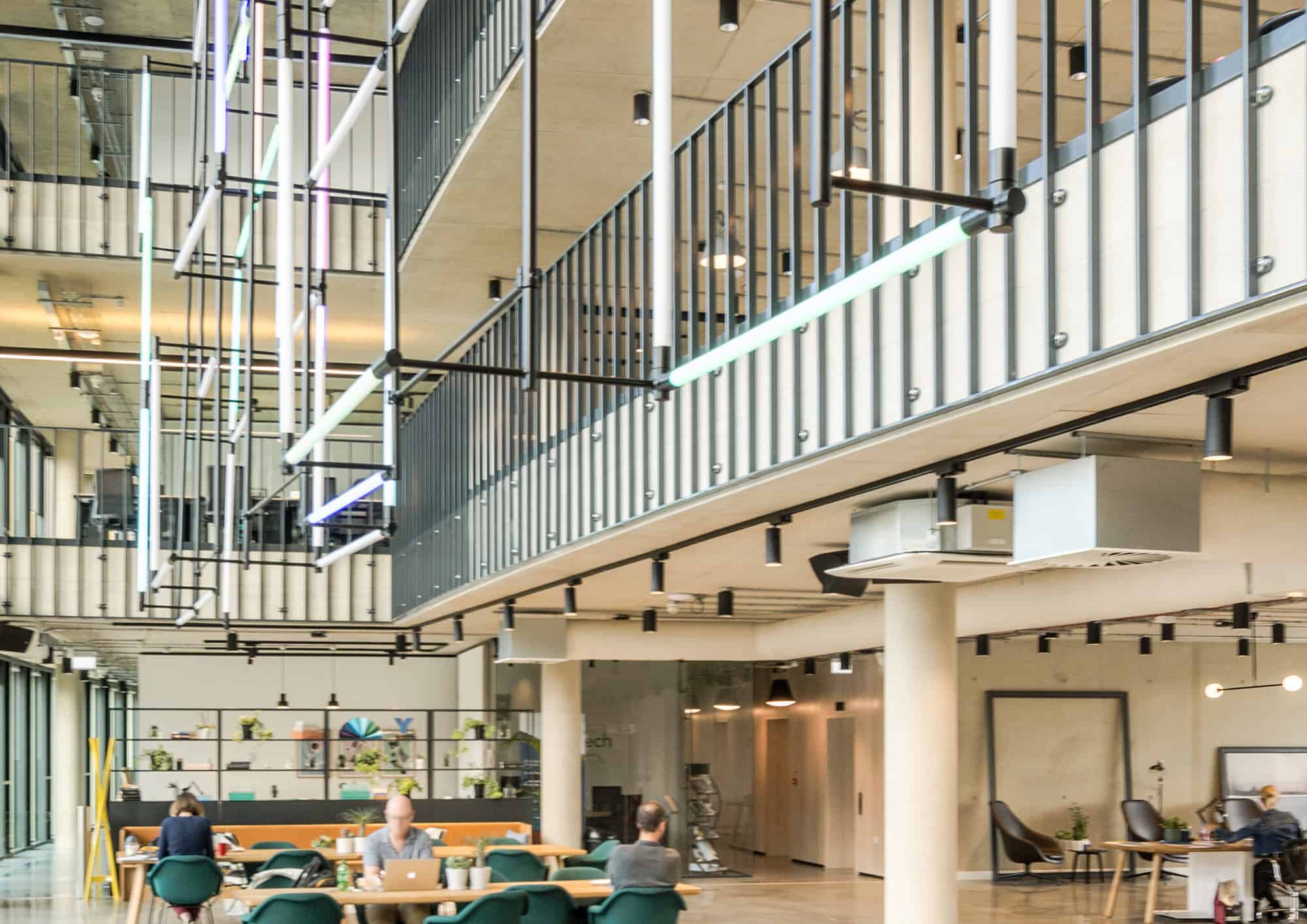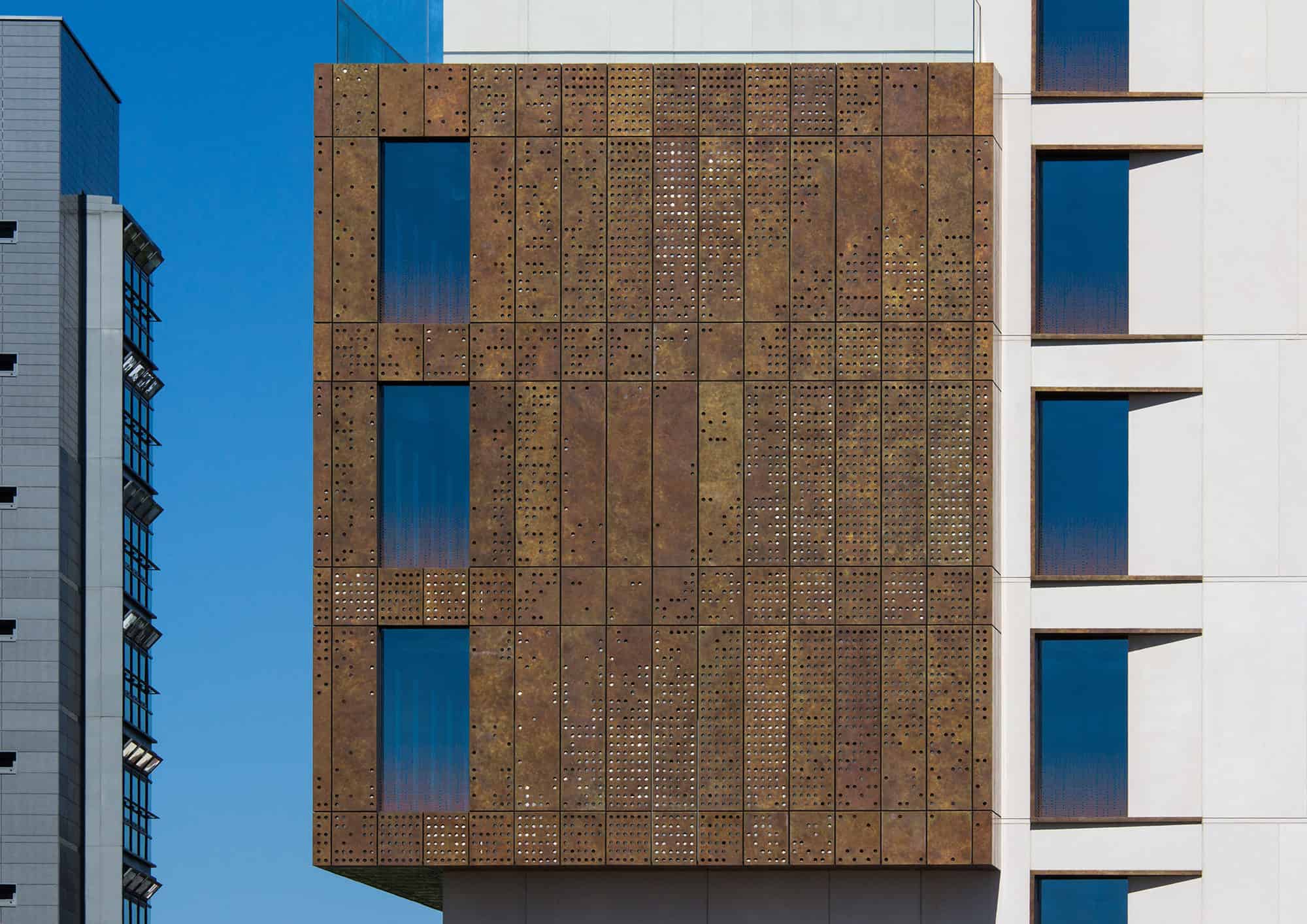Maidenhead, UK
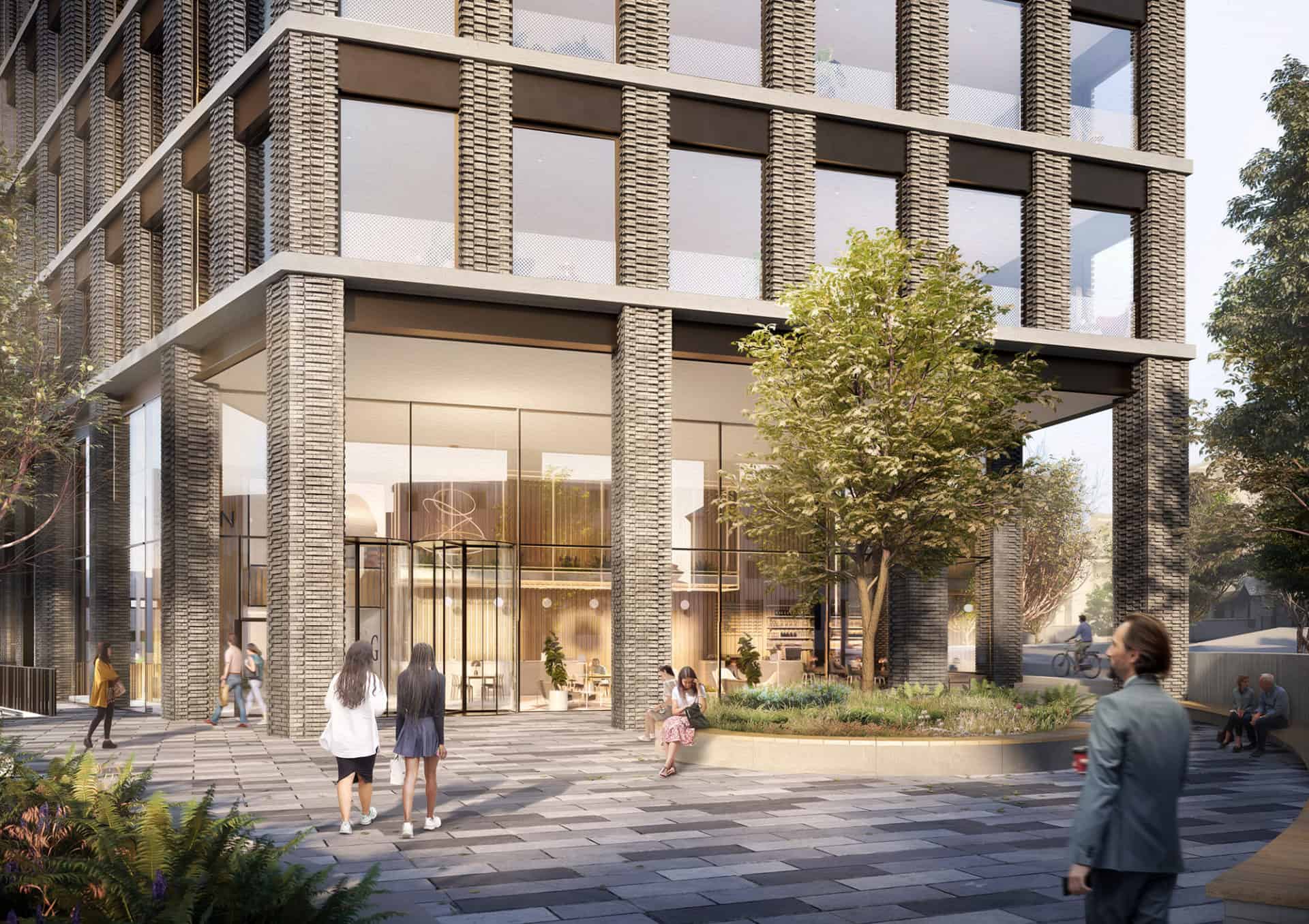
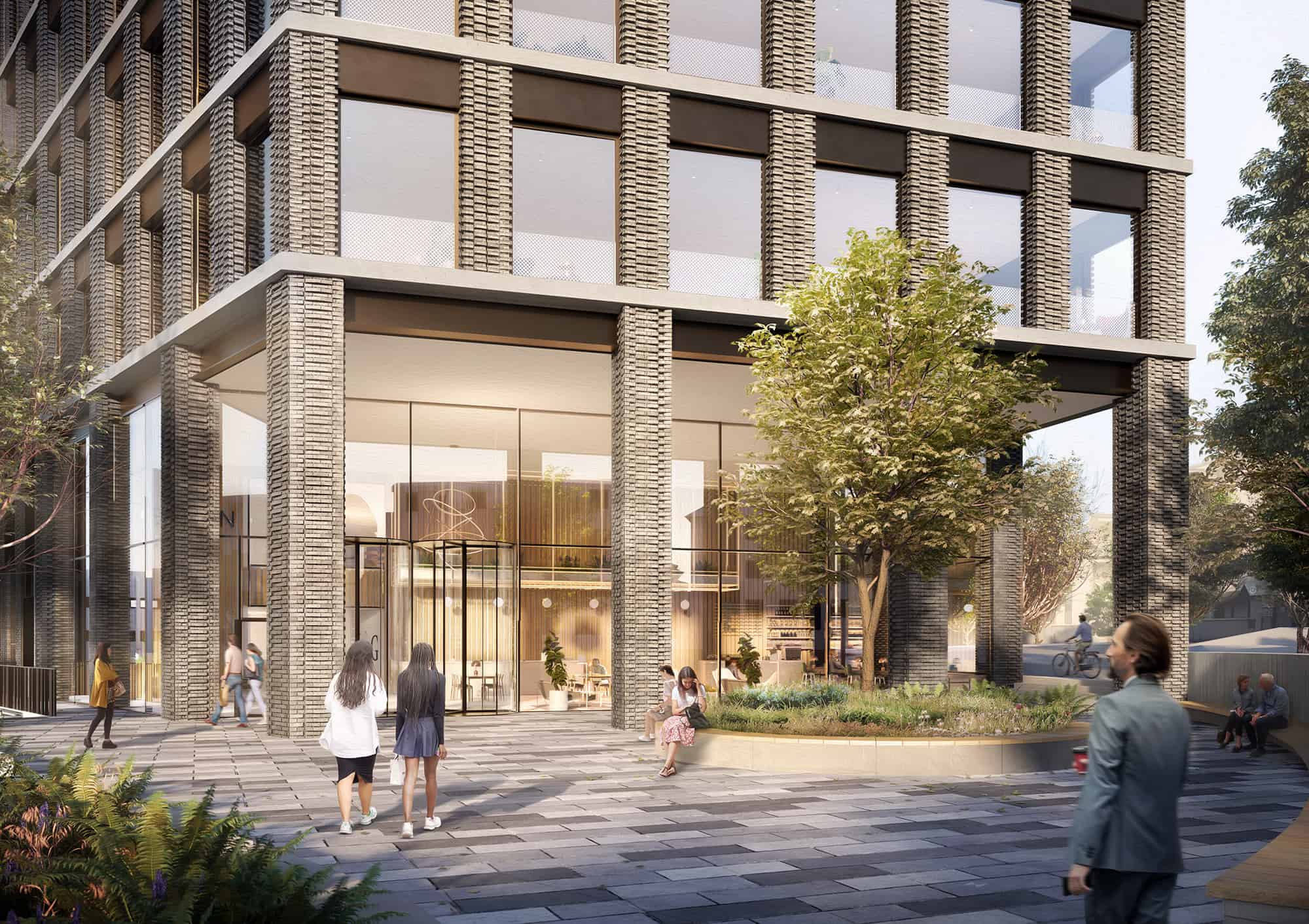
Mixed use master plan creating a new community of 125 residential homes and two new headquarters office buildings, that places emphasis on highly sustainable and quality architecture, in this prominent gateway location in Maidenhead
Project Details
Collective Team
Our proposals for a new mixed-use masterplan comprising 125 new residential homes, including 30% affordable homes, and two new headquarters office buildings totalling 23,720sqm have been approved by the Royal Borough of Windsor and Maidenhead. The office space and residential building are integrated through a new high quality public realm and landscaped environment.
Our proposals create three impressive and sustainable buildings as part of a phased development that improves and increases on the existing office space, which is complimented by residential uses to create a new vibrant mixed use community that integrates itself into its context through increased permeability and activity across the site.
The evolution of the master plan is borne from an iterative design and planning process in collaboration with the Royal Borough of Windsor & Maidenhead culminating in a hybrid planning application that comprises a detailed element for the first phase office building and an outline application for the residential and future office buildings that will complete the development.
Our design for the first phase office building creates 115,000sqft net of highly efficient, agile office space that provides unrivalled quality in Maidenhead developed speculatively to attract national and international occupiers.
The building is designed for either a mix of tenancies or a single large occupier with highly efficient floorplates of around 21,000 sqft that are created by positioning the cores to the perimeter of the building. The main core to the north allows direct access to the landscape and arrival space to the building while promoting the optimum views out of the office towards the east, south and west. A secondary core to the south is paired with sun-lit break out terraces that provides external amenity and help to naturally shade the building to avoid overheating.
The location of the cores to the perimeter also allows the cores to be designed to maximise natural light into the lobby and stair but views out into the landscaping, this creates a space for chance interaction and collaboration within the building and adds to the animation of the façade. The building users also benefit from a large communal roof terrace with an amenity space that functions for a variety of uses or events.
The massing is broken down into three constituent volumes to provide a hierarchy to the building that is influenced by its three principal contextual roles; forming the gateway junction, responding to the residential uses to the south and marking the public realm at the arrival to the building and to the wider campus development.
The proposals sample architectural styles and materials from the character of Maidenhead and the site’s historic context as a former electric works, both of which predominantly use brick with articulated detailing complimented by fine metalwork. This is reinterpreted in a modern high quality brick façade module with accented metalwork and a contrasting cornice line familiar in the stone detailing of Victorian warehouses. These modules playfully shift in their articulation, texture and depth across the building to define a horizontal and vertical hierarchy. The volumetric expression that is integral to the three parts of the massing is emphasised through this variation in brick detailing.
The bolder gateway volume has a simpler smooth brick texture that is flanked by two volumes that have an increased articulation and texture in the brickwork to create a more tactile and human scale at the buildings edges and adds depth to the double height space that marks the arrival to the building.
These subtle variations in the brickwork are employed with rigour across the facade to create a building that is urban in character with a strong identity that marks the importance of the gateway site, whilst being calm and restrained with a strength in integrity that is embedded in its context.
Sustainability, health and wellbeing
An integrated approach to sustainability, health and wellbeing is a key driver in the design of the wider master plan and the first phase office building which will be fossil fuel free.
The project is committed to providing an exemplar holistic sustainable development which provides a highly efficient low energy, fossil fuel free office space and makes efficient use of resources and enabling future resilience to climate change. The office building targets a BREEAM rating of ‘Excellent’, with an aspiration to achieving an ‘Outstanding’ rating with the intent of achieving Zero Carbon in operational emissions.
The design seeks to contribute to the health and wellbeing of the building users through the promotion of sustainable travel to work, with Maidenhead Station a short walk away, and by encouraging cycling through the provision of enhanced cycle and changing facilities in a ‘gym style’ block.
The use of stairs to promote a healthy and active lifestyle is further encouraged by providing a naturally lit stair with views out into the landscape surrounding the building, and by providing clear visual connections to the stairs from the office floorplates, on approach to the lifts, and on arrival to the building.
Terraces create activity and relief to the building while providing a variety of private and communal spaces for the building users.
Residential design
Our design for the masterplan includes illustrative proposals for the residential building to demonstrate how the outline application could come forward at a later date. The residential uses form a key part of the site in creating a vibrant mixed community and to activate the proposed street and landscaped spaces included the existing key pedestrian route adjacent to the site. The form of the building creates a linear block that provides a clear rhythm and urban grain within the masterplan that is cranked to create a natural route through the site and to increase the size of private landscaped amenity gardens.
The building includes a series of key anchor active frontages and entrances through the site that provide activity to the public realm and frame key views into the site. 125 new homes are provided on the upper floors with views over the proposed landscaping and beyond with cores designed to provide natural daylight into the central corridor and provide a visual connection to the amenity garden.
The illustrative façade design for the residential building seeks to integrate it into the overall masterplan to create a cohesive campus development through the use of a complimentary palette of materials and detailing to the office building in subtly contrasting tones and textures. A textured brickwork is used to the lower floors to create horizontal banding, which accentuates the activity to these levels and highlights the connection between the street and the residential amenity at the upper ground floor.
Entrances are expressed as double height spaces to provide an open and clearly legible arrival point, and connection through to the garden.
